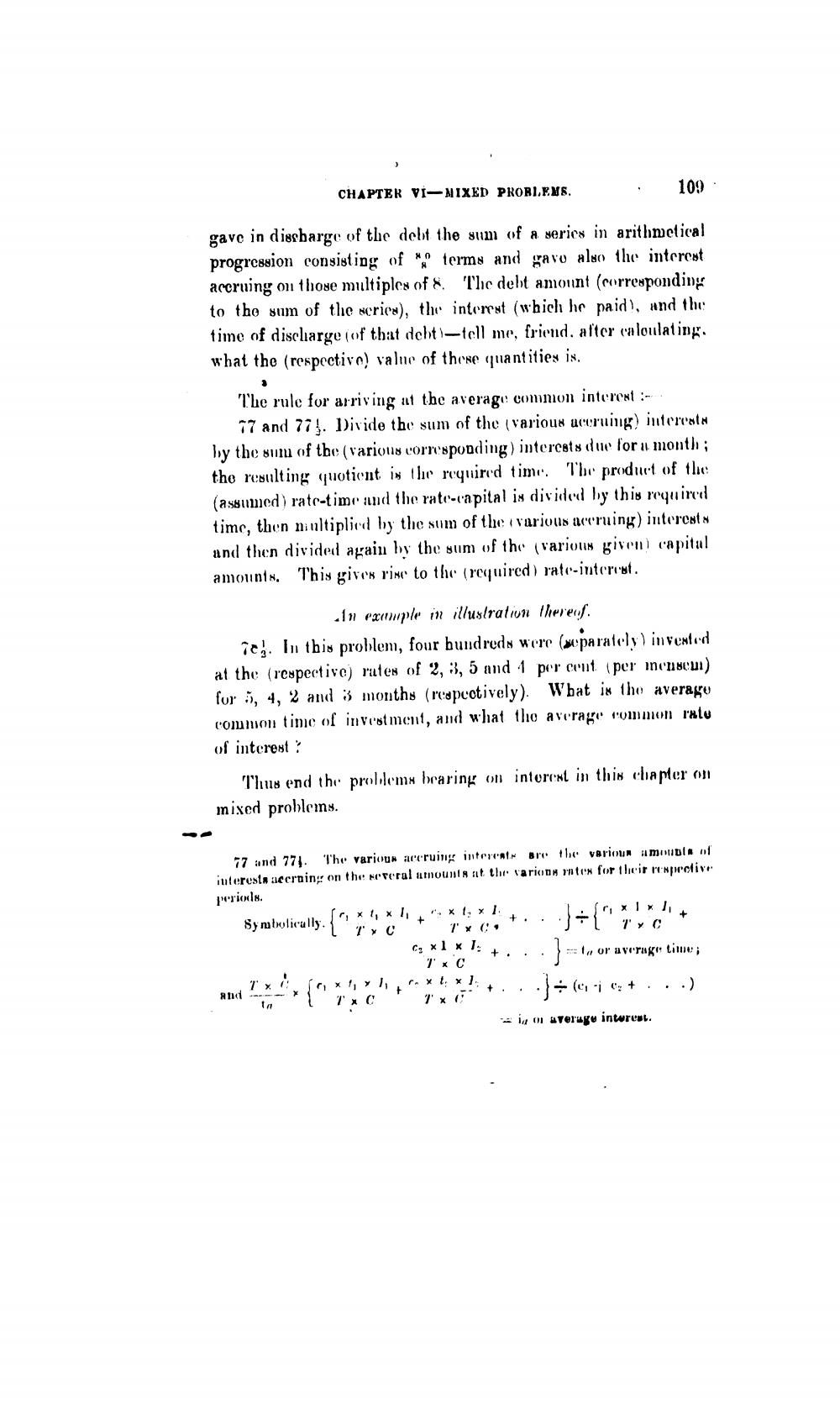________________
gave in discharge of the debt the sum of a series in arithmetical progression consisting of terms and gavo also the interest accruing on those multiples of 8. The debt amount (corresponding to the sum of the series), the interest (which he paid), and the time of discharge (of that debt)-tell me, friend. after calculating. what the (respective) value of these quantities is.
3
The rule for arriving at the average common interest :
77 and 77. Divide the sum of the (various accruing) interests by the sum of the (various corresponding) interests due for a month; the resulting quotient is the required time. The product of the (assumed) rate-time and the rate-capital is divided by this required time, then multiplied by the sum of the various accruing) interests and then divided again by the sum of the (various given) capital amounts. This gives rise to the (required) rate-interest.
An example in illustration thereof.
7e. In this problem, four hundreds were (separately) invested at the (respective) rates of 2, 3, 5 and 4 per cent (per mensem) for 5, 4, 2 and 3 months (respectively). What is the average common time of investment, and what the average common rate of interest?
CHAPTER VI-MIXED PROBLEMS.
Thus end the problems bearing on interest in this chapter on mixed problems.
and
Bre the various amounts of 77 and 774. The various accruing interests interests acerning on the several amounts at the varions rates for their respective periods.
Symbolically.
Tx &
ta
x
r, x 1, x 1, Ty C
[r, x 1, x 1,
1
T C
x 1 x 1. Tx C C2 x 1 x 1. Tx C r. x t. x 1. 7x C
+
+..
109
+.
}:
[ x 1 x 1, Tx C
i on average interest.
+
to or average time;
(e1je2+. ..)




